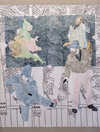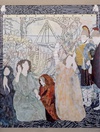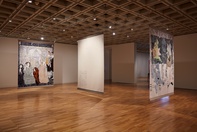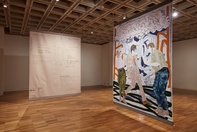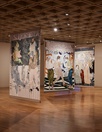Helen Johnson
Melbourne
2017
Displayed 2017 at Art Gallery of New South Wales
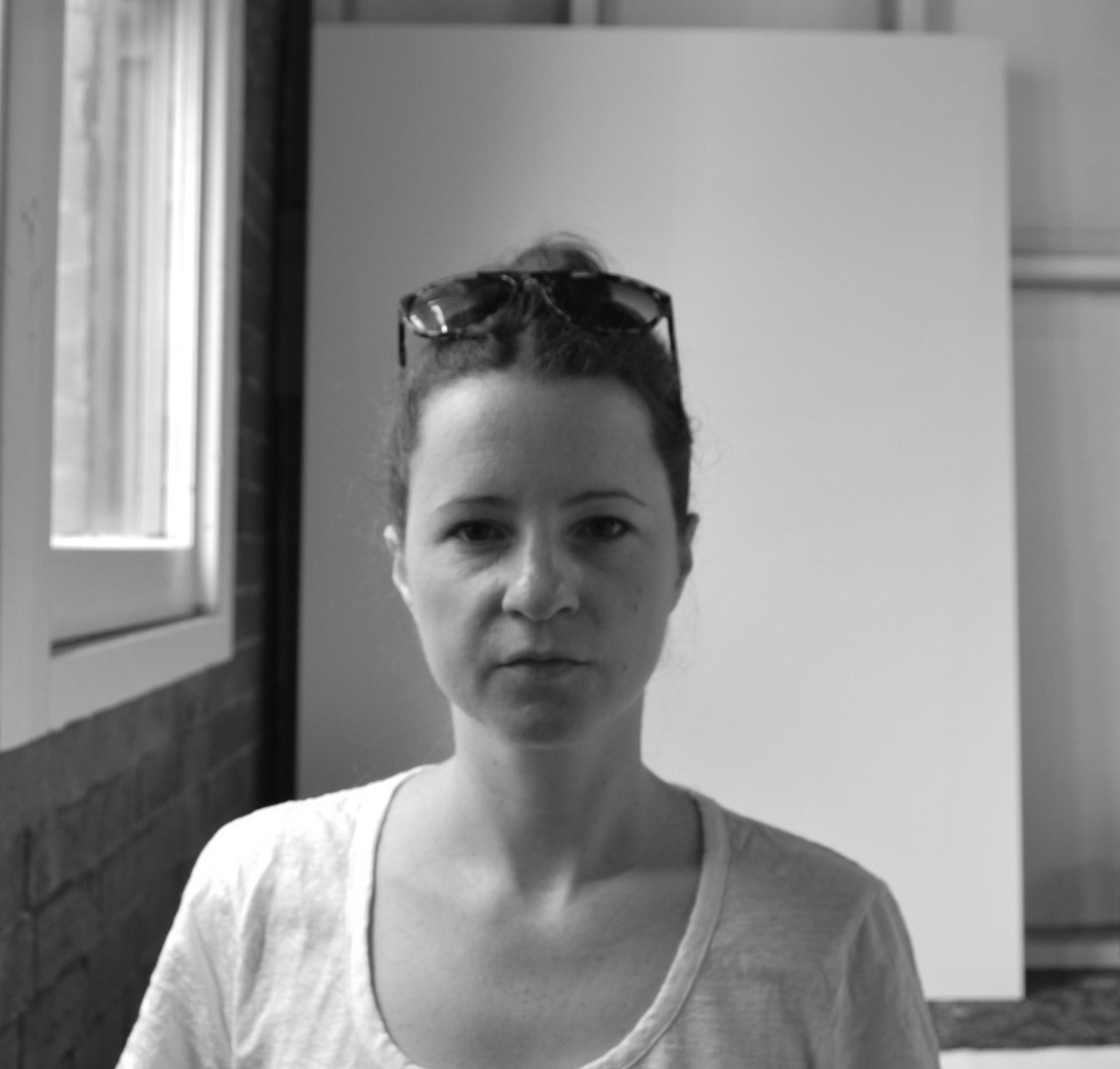
Helen Johnson
Born 1979, Melbourne. Lives and works Melbourne
Helen Johnson is a painter with a particular interest in employing painting to reassert, shake open and question imagery that has played a role in the processes by which Australia has constructed and hidden among false histories of itself since colonial invasion. She is interested in aesthetic experience and how it can open the mind to critical contemplation. Johnson’s works are often large-scale, stylistically changeable and loose-hanging.
Artist text
by Wayne Tunnicliffe
Helen Johnson’s recent work suggests she is becoming a history painter, though not of the grand narratives depicted in a heroic or commemorative style traditionally associated with this genre. Through a process of quotation, decontextualising and unexpected combinations, Johnson’s paintings consider the authority of images that have become part of our collective historical subconscious. Her sources are specific and vary from high art to popular illustration and early films, forming a pattern book of colonial types that represent the processes of nation-building in the 19th and early 20th centuries. These images both participated in and are symptomatic of the complex ways foundational narratives developed to legitimise the colonial enterprise of possessing Australia.
In Or else (2016) Johnson paints a policeman and bushranger engaged in a gunfight, a scene derived from the 1906 Australian film The Story of the Kelly Gang, whose success engendered the bushranging genre that dominated early Australian cinema. (1) Taken out of context, Johnson’s pastel-coloured version is as surreal as the highly melodramatic black-and-white original. Behind this scenario, and held above the foreground figures, is a painting within the painting that presents two further figures – a proud, materially successful landowner on the right from an 1863 S.T. Gill watercolour and, on the left, a James Gillray caricature from 1791 of Britannia as a map of the UK formed from an aged crone riding a fish. (2) Johnson has reversed both figures from the originals and connects them by an ocean of rhythmic waves, pairing the thrusting Australian squattocracy with a decrepit UK needing renewal. This painting is held aloft by two naked men, whose flaccid genitals hang out just below the work, explicitly gendering these depictions and the colonial enterprise.
Johnson approaches her subject matter gently and with an accessibility that draws the viewer in. The layered images ask for further engagement to understand their skein of references, something Johnson’s technical variety and virtuosity reinforces. In Or else the colour of the foreground figures’ clothing was applied through pressing real paint-soaked clothes to the canvas surface and the flatness of this effect contrasts with the surprisingly textured and thick paint of the black-and-white cartoon in the background, reversing expected painterly space. Johnson presents her works suspended from the ceiling with the back of the canvas also on view. Written and doodled on these is a notational record of thoughts, quotes, diagrams and sketches that reveal aspects of the artist’s process and alternate possibilities for the painting while questioning its authority. Johnson is acutely aware that she is Australian of European descent and is therefore implicated in these colonising narratives whose continuing efficacy and agency her work highlights, just as they unravel this history through a set of conceptual strategies and stylistic choices.
Notes
(1) Directed by Charles Tait and filmed around Melbourne, The Story of the Kelly Gang was then the longest narrative film made and is now considered to be the world’s first feature-length film.
(2) S.T. Gill’s watercolour is critical of the dispossession of Aboriginal people by Europeans and in full shows a wealthy landowner lording it over an Aboriginal stockman. The work is inscribed Squatter of N.S.Wales Monarch of more than all he Surveys (1863), and is found within Dr Doyle’s Sketchbook, State Library of New South Wales, Sydney.
